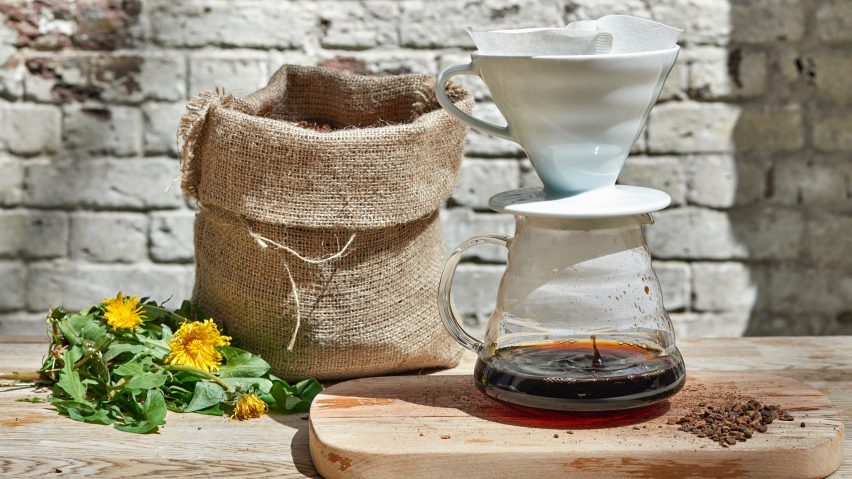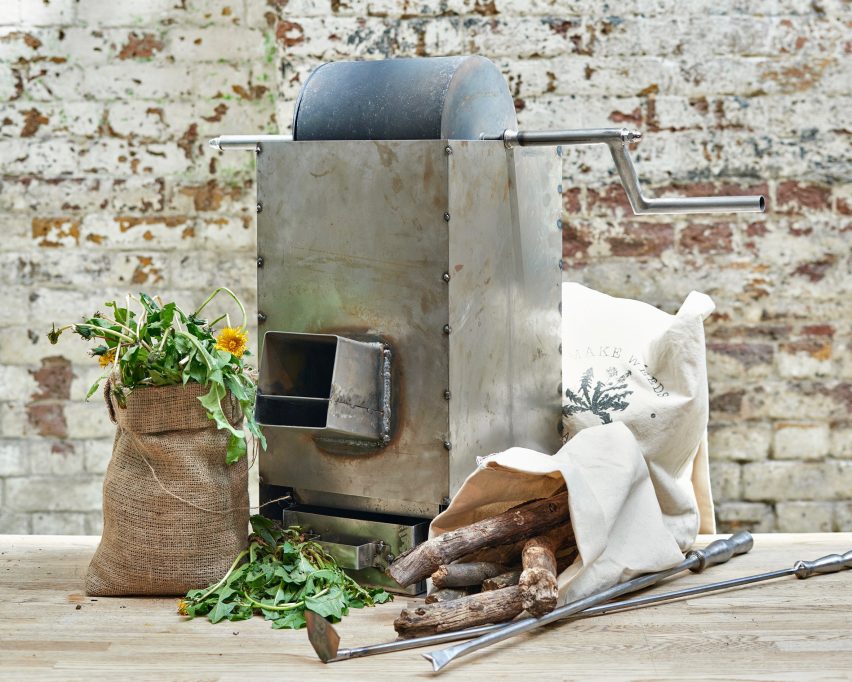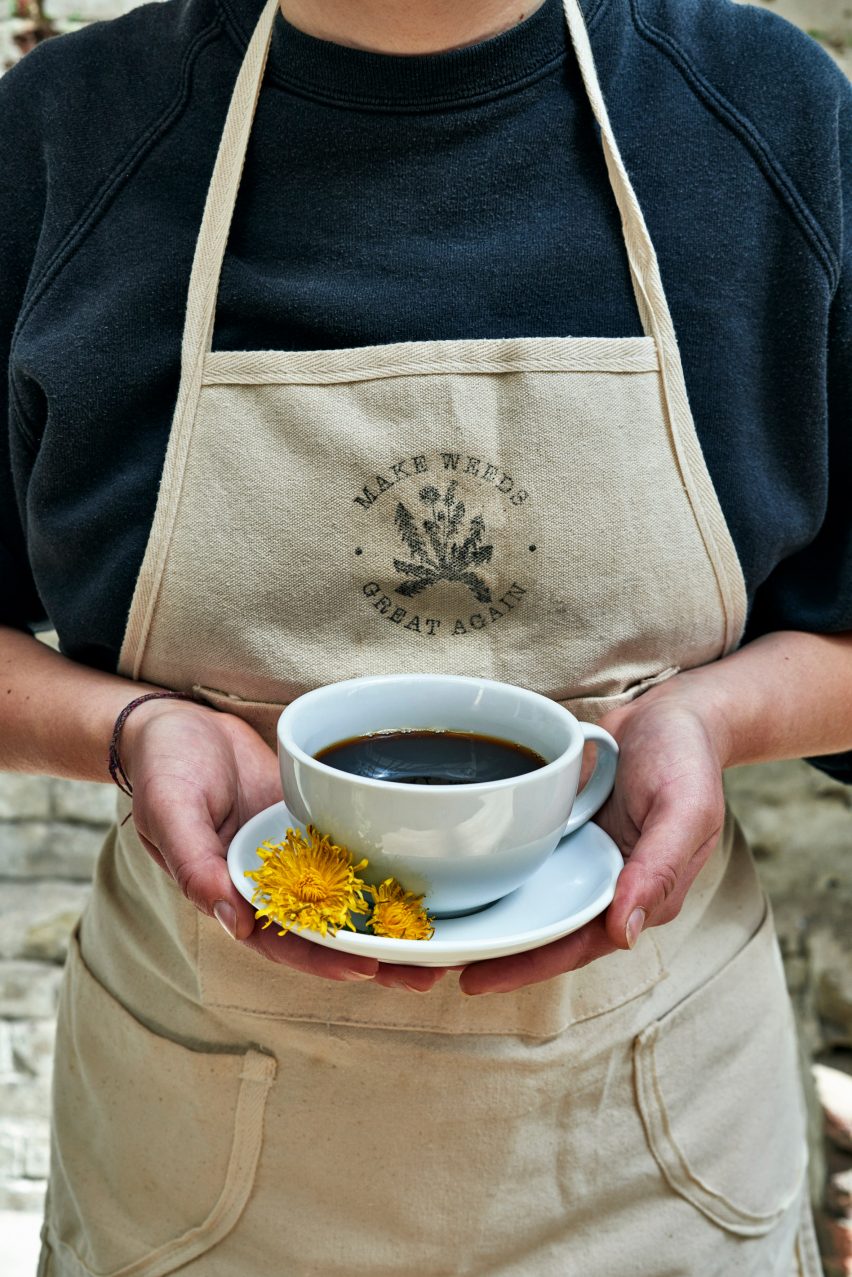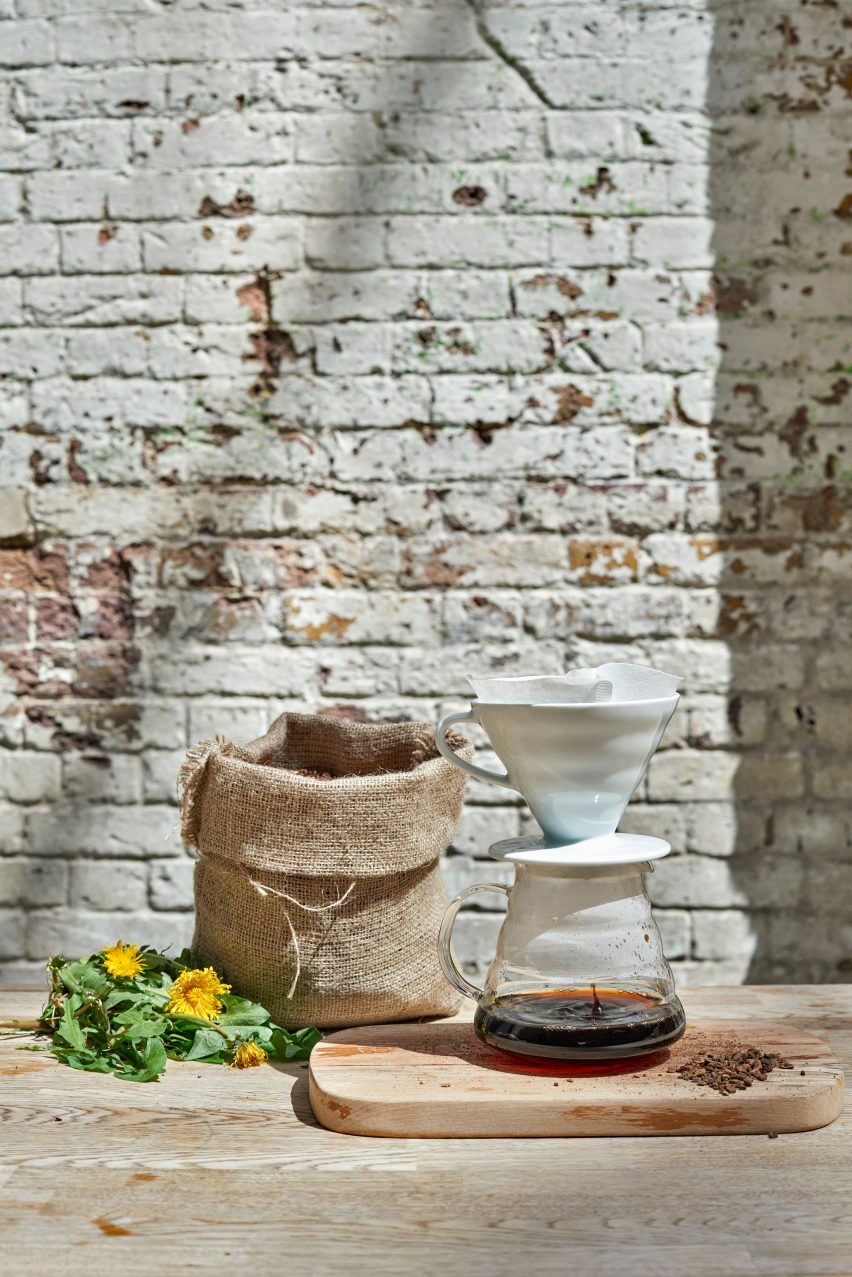
Daisy Newdick develops DIY process for making coffee from dandelions to promote biodiversity
Central Saint Martins graduate Daisy Newdick has created a roaster for making dandelion coffee to demonstrate that consumers can brew the beverage in their own homes from root to cup.
Called Make Weeds Great Again, Newdick's project aims to highlight the overlooked qualities of the common dandelion plant, which is often just seen as an "unsightly weed that spoils the nation's lawns".
The project was showcased as part of the Designing in Turbulent Times exhibition by Central Saint Martins college in London, which brought together a series of design propositions for a more sustainable future.
After discovering that, in the UK alone, people consume around 95 million cups of coffee per day, the designer was driven to show consumers that they can make their own alternative coffee that doesn't require beans to be shipped from overseas.

Newdick foraged for dandelions in gardens and fields, ensuring that no weedkillers were used, and that part of the root was left in the soil, so that more would grow the following year.
She developed her own roaster to prepare the dandelion roots before grinding and brewing them into coffee.
"In the West, and especially in cities, we take for granted the immense distances and complex supply-chains foodstuffs travel before they reach us," the designer told Dezeen.
"Often, the social and environmental costs of mass-produced dietary staples are enveloped by convenience," she continued.
"This is particularly true of coffee – a drink so embedded within western culture that the exploitation of workers, contamination of water supplies, and widespread deforestation accompanying the cultivation of it, are overlooked."
"With increasing demand driving environmentally degrading practices, together with the impacts of the climate emergency, the future of this highly esteemed commodity is uncertain," added Newdick.

Newdick stumbled upon dandelions when researching edible weeds that could grow easily in the UK.
The chemical inulin that is present in the thin skin around the surface of the root contains certain aromatic compounds that give a similar bitterness and chocolatey smell to coffee.
During this research she found that chicory – which is botanically related to dandelions – and burdock root can also be used as a substitute to coffee. She plans to use these to develop her project in the future.
The best time to collect the plants is in autumn, when the roots have the highest concentration of inulin, granting more of a characteristic coffee taste and aroma when roasted.
As the designer explained, the process of making dandelion coffee is very similar to conventional coffee, involving roasting, grinding, and brewing.
After collecting, the dandelions are washed, chopped, and dried. Once dried, the roots need to be roasted, while the leafy tops can be used as compost.

Newdick designed a roaster based on a rocket stove, with a hand-cranked rotating drum on top so that little fuel is needed to reach a high enough temperature.
An additional tray that slots over the roaster allows excess heat from the stove to be used to dry later batches of roots. Once roasted, the roots can be ground up and made into coffee.
By showing the different purposes that the dandelion can be used for, Newdick wants to encourage biodiversity in the UK, where she says there has been a 56 per cent decline in plant species populations since 1970.
The designer hopes that her hand-operated root-to-cup system will invite people to make their own coffee alternative from dandelion roots.
Northumbia university student Jamie Pybus also focused on the use of coffee in his graduate project. The designer developed a household kit that allows users to cultivate edible mushrooms using leftover coffee grounds.
Called Fungi Factory, the system encourages coffee drinkers to repurpose the grounds as a bed for growing oyster mushrooms in just one month, rather than throwing them away.